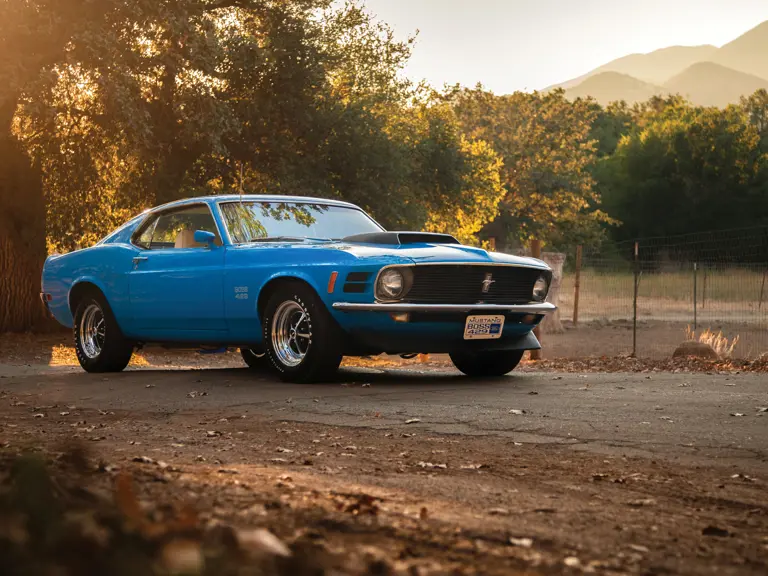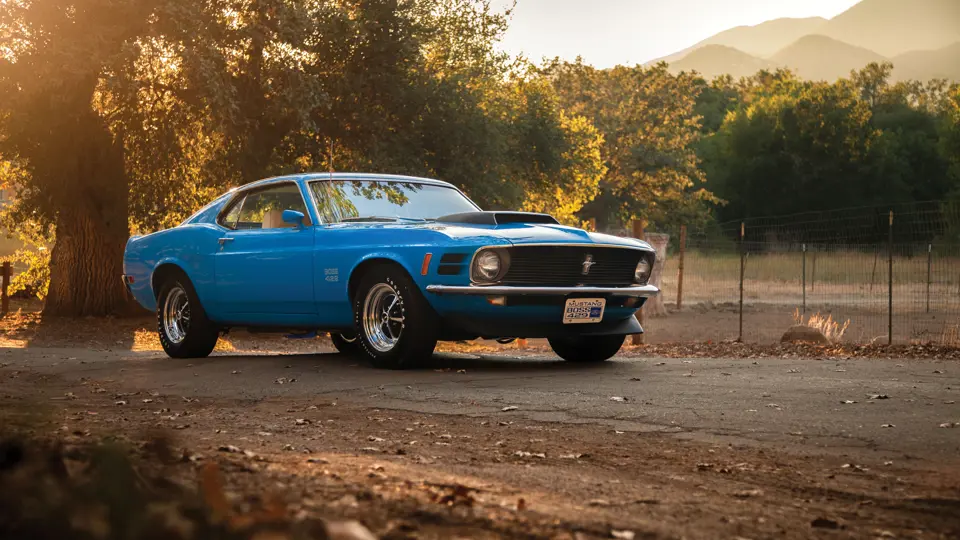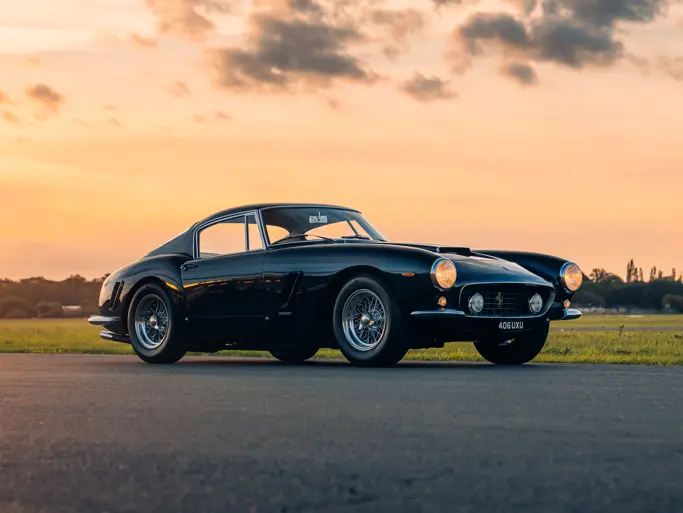 | Auburn, Indiana
| Auburn, Indiana
By the mid-1960s, the self-imposed racing ban of the “Big Three” collapsed, with most American auto manufacturers providing factory support to supposedly independent racing teams. With showroom sales tied to racing success, Ford went all-out to maintain its edge following David Pearson’s 1968 NASCAR championship win. Since NASCAR disapproved of the exotic SOHC 427, Ford’s Tunnel-Port 427 soldiered on through 1968, but a new engine was needed to make full use of the sleek new Torino Talladega and Cyclone Spoiler bodies. However, NASCAR rules demanded installation in at least 500 road cars to be made available to the public.
Based on Ford’s new 385-series V-8, the Boss 429 featured aluminum cylinder heads with hemispherical combustion chambers, an aluminum high-rise intake, a 735-cfm Holley carburetor, 10.5:1 compression, header-style exhaust manifolds, a four-bolt main block and more. Rather than install it in the midsize Torino and Cyclone like their NASCAR counterparts, Ford dropped the Boss 429 into the smaller Mustang, creating the ultimate “pony car.” Standard equipment included a “Toploader” close-ratio four-speed transmission and a nine-inch Traction-Lok rear end with 3.91:1 gears, plus an engine-oil cooler, a trunk-mounted battery, competition suspension with front and rear anti-roll bars and staggered rear shocks, power front disc brakes, chrome Magnum 500 wheels and wide F60X15 tires.
The Boss 429 was essentially hand-built with extensive modifications made to accommodate the new engine including the cutting and relocation of the front shock towers. To alleviate the production burden, Ford shipped the cars for conversion to Brighton, Michigan’s Kar Kraft for completion. Ford conservatively rated the “street” Boss 429 Mustang at 375-hp, a figure that hardly explained the car’s ability to run 12 seconds flat or better in the quarter-mile with just a few minor modifications.
At $4,087, the Boss 429 was the priciest non-Shelby Mustang to date, with limited production of 859 (including two Boss-Cougars) for 1969. Just 500 more followed for 1970 (including two “Quarter Horse” Boss/Shelby hybrid prototypes) prior to the cancellation of Ford’s corporate racing program. Just five exterior colors were available: Calypso Coral, Grabber Orange, Grabber Green, Grabber Blue and Pastel Blue. The result of this special work concluded with one of the rarest and most powerful Mustangs ever produced, and it is today, one of the most prized musclecars from a golden age of performance-oriented American cars.
Built on September 29, 1969 and delivered new on November 11, 1969 by Hull Dobbs Ford, 2700 Poplar Avenue, Memphis, Tennessee - KK2192 is powered by a correct Boss 429 engine backed by a four-speed manual transmission and the Traction-Lok rear end. The Mustang is finished, as when new, in Grabber Blue with a White interior. The Boss 429 also features the Boss-9 specific Competition Suspension, power steering, power front disc brakes, Deluxe Décor Group and AM radio. The car is reported with both VIN numbers present on the left and right inner fenders and documented with a Deluxe Marti Report. A copy of the original window sticker also accompanies this legendary machine.
The SportsRoof-styled car was treated to a rotisserie restoration in 2001 to factory specifications, and in 2009, was handed over to Hunter Williard. Mr, who is well-recognized as having the east coast’s best MCA Mustang restoration shop and his work included “dialing in” the massive engine and running gear to top-notch condition. The undercarriage and engine bay are highly-detailed with correct overspray, chalk marks, smog system and paint dabs. In 2010, further meticulous detailing was performed by Glenn Vaughn Restoration in Post Falls, Idaho. They specialize in concours-quality cars that are invited to, and shown at prestigious events; such as this spectacular Mustang Boss 429 is certainly quite worthy of.





